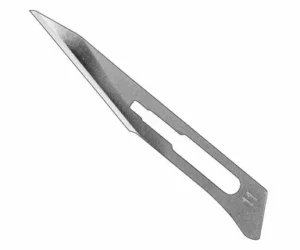In the world of medical and surgical tools, precision is everything. Whether you’re a surgeon performing life-saving procedures, a student learning anatomy, or a technician in a lab, choosing the correct scalpel blade sizes can make all the difference. But with so many blade numbers and shapes available, it’s easy to feel overwhelmed.
This blog is your no-nonsense, easy-to-understand guide to scalpel blade sizes—what they mean, how they’re used, and which size best suits your task.
What Is a Scalpel Blade?
A scalpel is a small, sharp knife used primarily for surgery, anatomical dissection, or lab work. It consists of two parts: the handle and the detachable blade. The blade size and shape determine how it performs—each designed for specific cuts, angles, and tissue types.
Scalpel blades are usually made from high-grade stainless steel or carbon steel and are disposable after one use to ensure safety and hygiene.
Why Blade Size Matters
Not all incisions are the same. A precise eye surgery demands a different blade than a large abdominal operation. Choosing the wrong blade can affect accuracy, tissue healing, and even patient outcomes. That’s why understanding scalpel blade sizes is more than academic—it’s a practical necessity.
Common Scalpel Blade Sizes and Their Uses
Scalpel blades come in different sizes, each designed for specific tasks. The #10 blade has a large curved edge, ideal for making big, smooth incisions in skin or muscle during
general surgery. The #11 blade is sharp and pointed, perfect for precise punctures or small cuts, often used in abscess drainage or vascular procedures. The #12 blade has a hook shape, commonly used for removing stitches or making curved cuts in dental or ear, nose, and throat surgeries. For delicate, detailed work like plastic surgery or paediatrics, the #15 blade is a popular choice due to its small, curved edge. Larger blades like #20 to #24 are used for deeper or wider cuts in orthopaedics, autopsies,
or veterinary procedures. Understanding these common sizes helps ensure better precision, safety, and outcomes in both medical and lab settings.
Choosing the Right Scalpel Blade: Factors to Consider
1. Type of Tissue
Delicate skin? Go with a #15. Tough muscle or fascia? You might need a #10 or #22.
2. Depth and Angle of Incision
For deeper, angled cuts, a longer blade like #11 or #2
2 works well. For surface-level precision, #15 is your go-to.
3. Procedure Type
From dermatology to orthopaedics, every medical speciality has a preferred blade. Always consider your field’s standard tools.
4. User Experience
Students and beginners might prefer smaller, more manageable blades like #15, while experienced surgeons often tailor their choice by feel and familiarity.
Blade Materials: Not All Steel Is the Same
Scalpel blades are primarily made from:
Carbon Steel: Known for razor-sharp edges an
d precision cutting, though it may rust without proper care.
Stainless Steel: Offers good sharpness and high corrosion resistance—ideal for moist environments or extended use.
Some speciality blades come with coatings to reduce friction or minimise tissue trauma. Always choose based on your needs and surgical environment.
Safety First: Proper Handling of Scalpel Blades
Working with sharp surgical blades demands a strong focus on safety:
Use a blade remover or forceps when attaching or removing a blade—never with your fingers.
Dispose of blades in an approved sharps container.
Never reuse disposable blades, even for simple procedures. Dullness can risk tearing tissue.
Mistakes to Avoid When Choosing Scalpel Blade Sizes
Overusing one blade for every task: No blade fits all procedures. Don’t compromise results for convenience.
Ignoring handle compatibility: A loose or tight fit risks injury or inaccurate cuts.
Using dull or expired blades: Always check the packaging date and replace old stock regularly.
